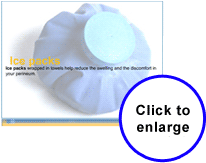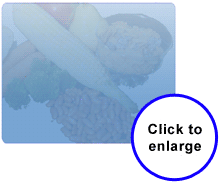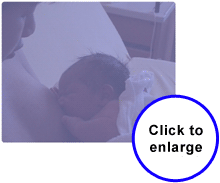E. EARLY CARE OF THE MOTHER
The first few days after your baby's birth are filled with excitement adjustments, and questions. In New Brunswick, a public health nurse will visit you at the hospital or will call you at home. You may be eligible for the Early Childhood Initiatives Program.
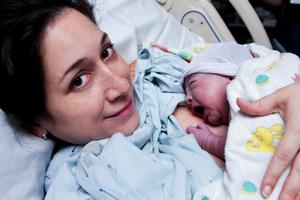
After you return home, you can continue to get information and support by contacting your Public Health Office, Telecare at 1-800-244-8353, or the hospital where you gave birth.
a. Care of the Mother
Whether you have a vaginal or cesarean birth, you will notice many changes in the hours and days following your baby's birth. Physically, your body recovers from childbirth and gradually returns to its pre-pregnant state. Emotionally, you get used to the idea of being a mother and begin to know and love your baby.
Rest and time with your baby will help to ease you through these changes.

While you are in the hospital, your temperature, pulse, and blood pressure will be checked. Your abdomen will be checked to see that your uterus is firm and returning to its normal size. If you have had an episiotomy, it will be checked to see if it is healing well.
Speak to the nurse or your health care provider if you have any questions about your body, your baby, or your new family
Test Your Knowledge
|
|
The following exercise will help you learn a little more about what you can expect after childbirth.
Click on the option button which corresponds to the correct answer and verify your answer by clicking on the "Check" button.
|
1 |
While the uterus is returning to its normal size, you may feel cramps in your abdomen. |
|
2 |
Lochia is vaginal discharge and looks much like a menstrual period. |
|
3 |
After childbirth, a woman should stay in bed as much as possible. |
|
4 |
The mature milk production begins two to four days after delivery. |
|
5 |
Breastfeeding delays the return of your period. |
b. Physical Discomforts
Let's look at the causes of physical discomfort after a vaginal delivery and discuss coping techniques.
Whether you have had an episiotomy or not your perineum (area between the vagina and the rectum) will be swollen and sore.
Here are a few tips to soothe perineum pain.
Pushing during delivery may cause hemorrhoids. If you had some during your pregnancy, the delivery may have increased the swelling and the pain.
Here are a few tips to relieve the swelling and the pain of hemorrhoids.
Hemorrhoids, which can be quite painful, should disappear on their own as your body recovers from pregnancy and delivery.
c. Care after a Cesarean Birth
After a cesarean, your care in the hospital will be a little different. If you have any questions, talk to your health care provider.
You may also find that you have feelings that you didn't expect, especially if you had planned a vaginal birth. These feelings are normal. Talk about how you feel with your partner, your health care provider or someone you trust.
1. Physical Care
After a cesarean birth, you will likely experience pain from your incision. Don't hesitate to ask if you need pain medication.
For the first 24 hours after the birth, you will have an IV to make sure you get enough fluids and a bladder catheter to help you urinate. You will be offered fluids and will slowly be encouraged to eat if you feel like it.
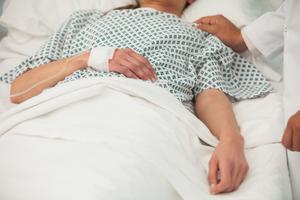
To make it easier to have a bowel movement after surgery, drink plenty of liquids and walk as much as possible. Your health care provider may suggest a stool softener or mild laxative. When you have a bowel movement, support your incision with your hands while you push gently.
After a cesarean, limit your activities such as lifting, hauling, and pushing for four to six weeks to allow the incision to heal.
2. Care of Your Incision
For two to six days your incision will be covered with a dressing. During your stay at the hospital the nurse will clean and change your dressing. You will be able to shower the day after delivery. You can remove the dressing while you shower. . If you are not sure that you can take a shower, ask the nurse for help.

Depending on the kind of stitches in your incision, they will either dissolve or be removed a few days after the surgery. Some doctors use metal clips or staples to close the incision. These will also need to be removed a few days after surgery.
Your incision will be sore at first and, as it heals, may feel numb, itchy, tight, or tender. This is a normal part of healing.
Your health care provider will tell you how to take care of your incision after you leave the hospital. Usually, your incision won't require any special care after you go home.

During feedings, place a pillow between your baby and the incision. You will both be more comfortable.
3. Rest
After a cesarean birth, your body must recover from both childbirth and surgery. Give yourself time to regain your strength.
Rest is an important part of recovery. Try to rest when your baby sleeps. Accept help when it is offered. Limit visitors. Try putting a sign on your door - "Mother and Baby Are Sleeping."

4. Vaginal Birth after a Cesarean
What about the next time?
If you had a cesarean birth, you may still be able to have a vaginal birth with future babies.
A vaginal birth after a cesarean is usually considered if
- your next pregnancy is uncomplicated.
- the incision runs from side to side rather than up and down.
- you are carrying only one baby.
- the reason for the previous cesarean doesn't happen again.
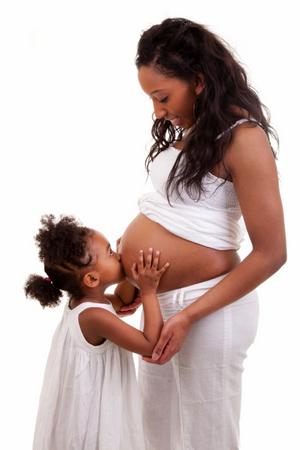
Even though a vaginal delivery after a cesarean is safe, there may be a small chance that the uterus could tear along the old incision during labour. Talk with your health care provider if you would like more information about a vaginal birth after a caesarean.
d. Getting Attached
You have probably begun to bond with your baby before his or her birth. The father is equally capable of bonding with his child. We must, therefore, give him this opportunity during the first minutes after birth.
Certain people feel this bond for their baby immediately after birth while others get attached progressively. The difference is similar to love at first site and falling in love.
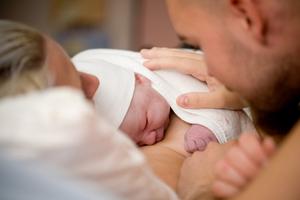
Here are a few tips to help develop a strong bond between you and your baby.
e. When Something Goes Wrong with Your Baby
In most cases, babies are born healthy. However, even with all the medical progress, a baby may be born with an illness or abnormality. Very rarely, a baby may die after birth.
When something like this happens, the families are devastated. Many mothers feel guilty and blame themselves. Certain mothers fear that they have done something to cause the abnormality or death of their baby even though this is rarely the case.
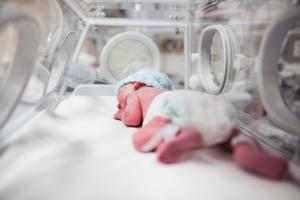
Parents who have a baby born with an abnormality or severe illness suffer a deep bereavement. They are in mourning of the child with whom they had hoped to share a normal life.
The loss is even more intense when the baby dies. This loss is hard to accept and it leaves the parents feeling profound sadness, shock, disbelief and anger. Mourning is essential to healing. It is through mourning that parents eventually get over this terrible loss. They need all the support they can get. No matter what your feelings are, do not hesitate to share them. Ask for help and accept the help offered to get through this difficult time.
